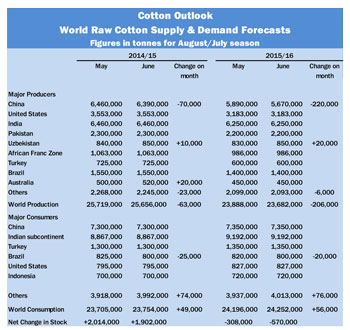RED BANK, N.J. — July 9, 2015 — Concept III Textiles International today announces a partnership with Coolcore, the only company globally to receive the Innovation Technology award for “Cooling Power” from the esteemed Hohenstein Institute. Concept III will introduce Coolcore to its network of iconic global brands whose customers value chemical-free wicking, cooling and drying performance. Coolcore’s complete line of commercialized cooling fabrics will be presented at the Concept III Booth #40051 at Outdoor Retailer Summer Market in Salt Lake City August 5-8, 2015.
Coolcore’s patented, chemical-free fabric technology utilizes a unique combination of fibers and cross-sections for three specific functions, wicking, moisture transportation and controlling the rate at which the moisture evaporates from the garment for the cooling effect. These components help to reduce the fabric’s surface temperature up to 30 percent lower than skin temperature. Additionally, with the Coolcore technology being chemical-free, the performance benefits never wash out.
“So many outdoor activities are high energy or take place in warmer weather, making Coolcore an attractive selling point for all apparel and fabric based performance products,” said Chris Parkes, Concept III partner and director of sales. “The fact that it’s chemical-free and out performs its chemical-based market competitors is especially appealing to us and to our customers.”
Coolcore has been well received by outdoor performance brands, and in spring 2016, several global brands will launch collections featuring Coolcore fabrics. The Coolcore fabric innovations are currently available in Dr. Cool Recovery-On-The-Go Wraps, the only wrap to combine ice and compression in one flexible wrap for recovery on the go, as well as chemical-free Cooling Accessories and Shirts that cool up to 30 percent lower than skin temperature when moisture is present.
“Concept III is a leader in textile-based solutions,” said Scott McQuade, vice president of strategic partnerships for Coolcore. “We know our partnership will quickly accelerate our relationships with additional brands and, ultimately, the adoption of our industry-leading, chemical-free performance fabrics. As consumers and retailers alike are becoming more savvy about performance apparel and are averse to chemical applications used in the majority of technologies on the market, Coolcore is the perfect solution.”
Posted July 14, 2015
Source: Concept III





